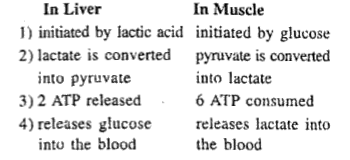ECG is a graphical representation of the electrical activity of the heart during a cardiac cycle. Identify the incorrect interpretation.
P-wave: Depolarisation of the atria.
QRS complex: Ventricular systole.
T-wave: Ventricular depolarisation.
End of T-wave: End of ventricular systole.
The correct Answer is:B
To solve the question regarding the incorrect interpretation of the ECG (electrocardiogram), we will analyze the components of the ECG and their meanings step by step.
1. Understanding the ECG Components:
- The ECG consists of several waves and complexes that represent different electrical activities of the heart during a cardiac cycle. The main components are:
- P Wave: Represents atrial depolarization (the electrical activity that leads to the contraction of the atria).
- QRS Complex: Represents ventricular depolarization (the electrical activity that leads to the contraction of the ventricles).
- T Wave: Represents ventricular repolarization (the process of the ventricles returning to their resting state after contraction).
2. Analyzing Each Statement:
- Statement 1: "P wave, depolarization of atria" - This statement is true as the P wave indeed represents atrial depolarization.
- Statement 2: "QRS complex, ventricular systole" - This statement is also true because the QRS complex corresponds to the depolarization of the ventricles, which is followed by ventricular contraction (systole).
- Statement 3: "T wave, ventricular depolarization" - This statement is false. The T wave actually represents ventricular repolarization, not depolarization.
- Statement 4: "End of T wave, end of ventricular systole" - This statement is true because the end of the T wave indicates the end of the ventricular contraction (systole).
3. Identifying the Incorrect Interpretation:
- From the analysis, the incorrect interpretation is found in Statement 3, which misrepresents the T wave as indicating ventricular depolarization instead of repolarization.
Conclusion:
The incorrect interpretation among the given statements is Statement 3: "T wave, ventricular depolarization."
---
- The ECG consists of several waves and complexes that represent different electrical activities of the heart during a cardiac cycle. The main components are:
- P Wave: Represents atrial depolarization (the electrical activity that leads to the contraction of the atria).
- QRS Complex: Represents ventricular depolarization (the electrical activity that leads to the contraction of the ventricles).
- T Wave: Represents ventricular repolarization (the process of the ventricles returning to their resting state after contraction).
- Statement 1: "P wave, depolarization of atria" - This statement is true as the P wave indeed represents atrial depolarization.
- Statement 2: "QRS complex, ventricular systole" - This statement is also true because the QRS complex corresponds to the depolarization of the ventricles, which is followed by ventricular contraction (systole).
- Statement 3: "T wave, ventricular depolarization" - This statement is false. The T wave actually represents ventricular repolarization, not depolarization.
- Statement 4: "End of T wave, end of ventricular systole" - This statement is true because the end of the T wave indicates the end of the ventricular contraction (systole).
- From the analysis, the incorrect interpretation is found in Statement 3, which misrepresents the T wave as indicating ventricular depolarization instead of repolarization.
The incorrect interpretation among the given statements is Statement 3: "T wave, ventricular depolarization."
Similar Questions
Give a graphic representation of the C3 cycle.
View SolutionGive a graphical representation of the C4 cycle.
View SolutionAssertion : ECG is a graphical representation of the electrical activity of heart cardiac cycle.
Reason : To obtain a standard ECG, patient is connected to machine with two leads, one with left wrist and one with left ankle.
View Solutionmark the true and false statements a. SAN generates as action potential which stimulates atrial systole.
b. ECG is an electrical representation of the graphical activity of the heart during a cardiac cycle.
c. The cardiac output of a normal man will be much lesser than an athlete.
d. The wall of right ventricle is much thicker than the left ventricle
e. In pisces the two separate circulatory pathways are present, hence they have double circulation.
f. The clsoed circulatory pattern is considered to be more advantageous than open circulatory pattern.
g. Glucose is absorbed by simple diffusion through lymph in lacteales present in the intestinal villi.
h. The SAN can generate the maximum number of action potential i.e. 140-150 min−1 in neonates, and is responsible for initiation and maintenance of the rhythmic contractile activity of the heart.
i. Angina can occur in any age but more common among the neonates and infants.
j. heart failure is sometimes called congestive heart failure because congestion of the blood vessels is one of the main symptoms of this disease.
View SolutionGive a graphic representation of carbon cycle in nature.
View SolutionExplain the changes in heart during one cardiac cycle.
View SolutionGive a graphic representation of phosphorus cycle in nature.
View SolutionWhich one of the following alphabets is the correct representation of the electrical activity of the human heart and the name given to the wave ?
View SolutionIdentify the incorrect match about Cori cycle.

View SolutionIdentify incorrect for electric charge q
View Solution